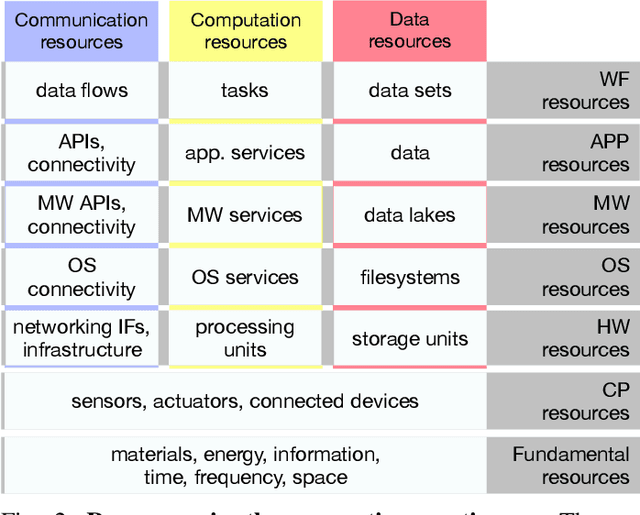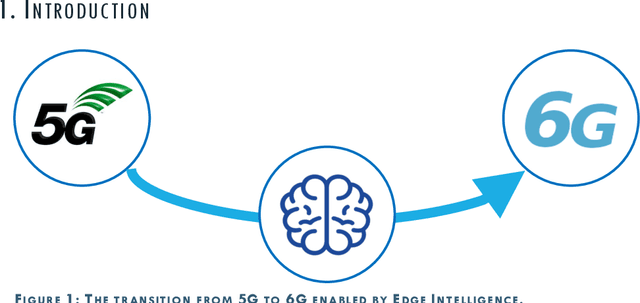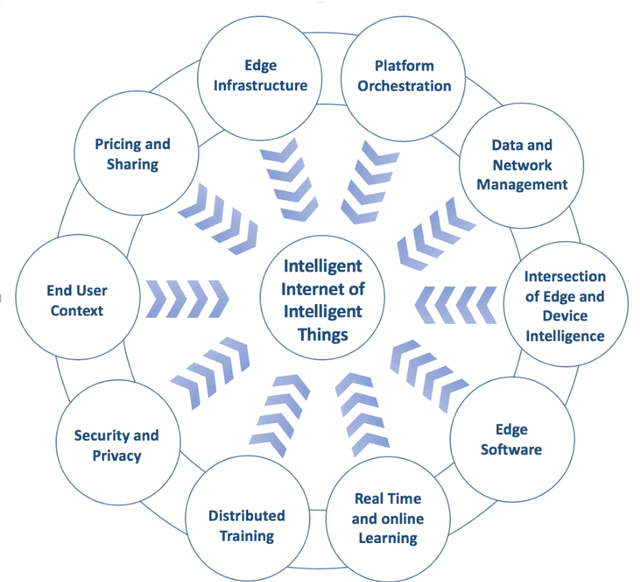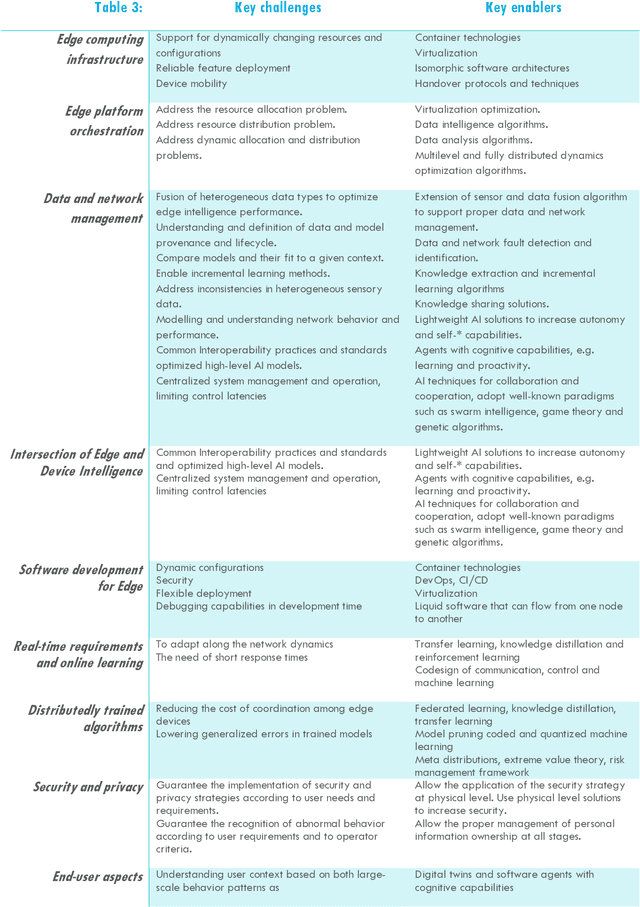Lauri Lovén
UserCentrix: An Agentic Memory-augmented AI Framework for Smart Spaces
May 01, 2025Abstract:Agentic AI, with its autonomous and proactive decision-making, has transformed smart environments. By integrating Generative AI (GenAI) and multi-agent systems, modern AI frameworks can dynamically adapt to user preferences, optimize data management, and improve resource allocation. This paper introduces UserCentrix, an agentic memory-augmented AI framework designed to enhance smart spaces through dynamic, context-aware decision-making. This framework integrates personalized Large Language Model (LLM) agents that leverage user preferences and LLM memory management to deliver proactive and adaptive assistance. Furthermore, it incorporates a hybrid hierarchical control system, balancing centralized and distributed processing to optimize real-time responsiveness while maintaining global situational awareness. UserCentrix achieves resource-efficient AI interactions by embedding memory-augmented reasoning, cooperative agent negotiation, and adaptive orchestration strategies. Our key contributions include (i) a self-organizing framework with proactive scaling based on task urgency, (ii) a Value of Information (VoI)-driven decision-making process, (iii) a meta-reasoning personal LLM agent, and (iv) an intelligent multi-agent coordination system for seamless environment adaptation. Experimental results across various models confirm the effectiveness of our approach in enhancing response accuracy, system efficiency, and computational resource management in real-world application.
Follow-Me AI: Energy-Efficient User Interaction with Smart Environments
Apr 18, 2024Abstract:This article introduces Follow-Me AI, a concept designed to enhance user interactions with smart environments, optimize energy use, and provide better control over data captured by these environments. Through AI agents that accompany users, Follow-Me AI negotiates data management based on user consent, aligns environmental controls as well as user communication and computes resources available in the environment with user preferences, and predicts user behavior to proactively adjust the smart environment. The manuscript illustrates this concept with a detailed example of Follow-Me AI in a smart campus setting, detailing the interactions with the building's management system for optimal comfort and efficiency. Finally, this article looks into the challenges and opportunities related to Follow-Me AI.
Pub/Sub Message Brokers for GenAI
Dec 22, 2023Abstract:In today's digital world, Generative Artificial Intelligence (GenAI) such as Large Language Models (LLMs) is becoming increasingly prevalent, extending its reach across diverse applications. This surge in adoption has sparked a significant increase in demand for data-centric GenAI models, highlighting the necessity for robust data communication infrastructures. Central to this need are message brokers, which serve as essential channels for data transfer within various system components. This survey aims to delve into a comprehensive analysis of traditional and modern message brokers, offering a comparative study of prevalent platforms. Our study considers numerous criteria including, but not limited to, open-source availability, integrated monitoring tools, message prioritization mechanisms, capabilities for parallel processing, reliability, distribution and clustering functionalities, authentication processes, data persistence strategies, fault tolerance, and scalability. Furthermore, we explore the intrinsic constraints that the design and operation of each message broker might impose, recognizing that these limitations are crucial in understanding their real-world applicability. We then leverage these insights to propose a sophisticated message broker framework -- one designed with the adaptability and robustness necessary to meet the evolving requisites of GenAI applications. Finally, this study examines the enhancement of message broker mechanisms specifically for GenAI contexts, emphasizing the criticality of developing a versatile message broker framework. Such a framework would be poised for quick adaptation, catering to the dynamic and growing demands of GenAI in the foreseeable future. Through this dual-pronged approach, we intend to contribute a foundational compendium that can guide future innovations and infrastructural advancements in the realm of GenAI data communication.
Distributed AI in Zero-touch Provisioning for Edge Networks: Challenges and Research Directions
Nov 29, 2023Abstract:Zero-touch network is anticipated to inaugurate the generation of intelligent and highly flexible resource provisioning strategies where multiple service providers collaboratively offer computation and storage resources. This transformation presents substantial challenges to network administration and service providers regarding sustainability and scalability. This article combines Distributed Artificial Intelligence (DAI) with Zero-touch Provisioning (ZTP) for edge networks. This combination helps to manage network devices seamlessly and intelligently by minimizing human intervention. In addition, several advantages are also highlighted that come with incorporating Distributed AI into ZTP in the context of edge networks. Further, we draw potential research directions to foster novel studies in this field and overcome the current limitations.
Energy-Sustainable IoT Connectivity: Vision, Technological Enablers, Challenges, and Future Directions
Jun 04, 2023



Abstract:Technology solutions must effectively balance economic growth, social equity, and environmental integrity to achieve a sustainable society. Notably, although the Internet of Things (IoT) paradigm constitutes a key sustainability enabler, critical issues such as the increasing maintenance operations, energy consumption, and manufacturing/disposal of IoT devices have long-term negative economic, societal, and environmental impacts and must be efficiently addressed. This calls for self-sustainable IoT ecosystems requiring minimal external resources and intervention, effectively utilizing renewable energy sources, and recycling materials whenever possible, thus encompassing energy sustainability. In this work, we focus on energy-sustainable IoT during the operation phase, although our discussions sometimes extend to other sustainability aspects and IoT lifecycle phases. Specifically, we provide a fresh look at energy-sustainable IoT and identify energy provision, transfer, and energy efficiency as the three main energy-related processes whose harmonious coexistence pushes toward realizing self-sustainable IoT systems. Their main related technologies, recent advances, challenges, and research directions are also discussed. Moreover, we overview relevant performance metrics to assess the energy-sustainability potential of a certain technique, technology, device, or network and list some target values for the next generation of wireless systems. Overall, this paper offers insights that are valuable for advancing sustainability goals for present and future generations.
Autonomy and Intelligence in the Computing Continuum: Challenges, Enablers, and Future Directions for Orchestration
May 03, 2022



Abstract:Future AI applications require performance, reliability and privacy that the existing, cloud-dependant system architectures cannot provide. In this article, we study orchestration in the device-edge-cloud continuum, and focus on AI for edge, that is, the AI methods used in resource orchestration. We claim that to support the constantly growing requirements of intelligent applications in the device-edge-cloud computing continuum, resource orchestration needs to embrace edge AI and emphasize local autonomy and intelligence. To justify the claim, we provide a general definition for continuum orchestration, and look at how current and emerging orchestration paradigms are suitable for the computing continuum. We describe certain major emerging research themes that may affect future orchestration, and provide an early vision of an orchestration paradigm that embraces those research themes. Finally, we survey current key edge AI methods and look at how they may contribute into fulfilling the vision of future continuum orchestration.
6G White Paper on Edge Intelligence
Apr 30, 2020



Abstract:In this white paper we provide a vision for 6G Edge Intelligence. Moving towards 5G and beyond the future 6G networks, intelligent solutions utilizing data-driven machine learning and artificial intelligence become crucial for several real-world applications including but not limited to, more efficient manufacturing, novel personal smart device environments and experiences, urban computing and autonomous traffic settings. We present edge computing along with other 6G enablers as a key component to establish the future 2030 intelligent Internet technologies as shown in this series of 6G White Papers. In this white paper, we focus in the domains of edge computing infrastructure and platforms, data and edge network management, software development for edge, and real-time and distributed training of ML/AI algorithms, along with security, privacy, pricing, and end-user aspects. We discuss the key enablers and challenges and identify the key research questions for the development of the Intelligent Edge services. As a main outcome of this white paper, we envision a transition from Internet of Things to Intelligent Internet of Intelligent Things and provide a roadmap for development of 6G Intelligent Edge.
 Add to Chrome
Add to Chrome Add to Firefox
Add to Firefox Add to Edge
Add to Edge